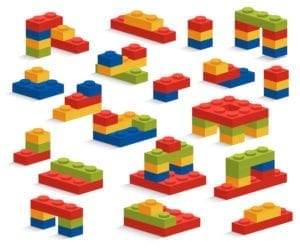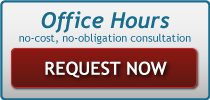We describe a process to evaluate and leverage current business assets for growth. We also address how to rework or re-configure existing assets to meet new customer requirements and those of potential prospects.
How to Leverage Current Business Assets For Growth
 In previous blog posts, we defined the elements of “working capital” for a high technology startup, helping entrepreneurs identify their business assets in terms of financial, intellectual, and social capital. And we identified four key aspects to consider when taking stock of your business assets to help determine which assets your company may be lacking.
In previous blog posts, we defined the elements of “working capital” for a high technology startup, helping entrepreneurs identify their business assets in terms of financial, intellectual, and social capital. And we identified four key aspects to consider when taking stock of your business assets to help determine which assets your company may be lacking.
Rather than looking outward to acquire new forms of capital, this post focuses on taking full advantage of your existing business asset. We also explore how to rework them so that they better serve your operating goals, customer needs, and emerging needs new prospects may have. Where you have already invested a lot of effort and money to build and improve an asset, we suggest that you consider new ways to leverage it instead of starting from scratch again. When you first start, you have to create a number of assets, but as you become established, you can shift more of your efforts to renewal and re-purposing of existing assets. You don’t have to reinvent the wheel, especially when the spokes, axle and schematics from the last wheel are still lying around.
Build on what you’ve accomplished, on successful customer relations you’ve fostered, and on investments that have paid off. Look for additional growth and profit from the efficient and effective use of your established assets.
Determining which assets to leverage


- What would allow you to create new offering?
- What would allow you to scale more rapidly?
- What would allow to lower costs and increase profits?
- Where are you getting inquiries?
Money is fairly easy to repurpose. It’s almost instinctual for small startups to look for ways to leverage cost and increase profits. Just beware of relying solely on cost reduction and not looking at faster and higher quality resources.
Leveraging equipment and process capabilities gets a bit harder.
Look at requests
Sometimes you develop a technique or resource for one purpose, but then realize it could be better applied in a different way. Maybe a customer “misused” the product and now you’ve discovered another need to market. Or maybe multiple customers made the same request for an additional or different offering. Look at areas where you’re getting inquiries and work backwards from what your customers value.
One example of building assets from requests comes from our SKMurphy business cards. I handed my business card out to somebody in 2005 and they asked “where’s your Skype address?” Skype had only been around a couple years, and in my mind it was a way for families to reconnect. I didn’t see how it could be applied to a business environment and it didn’t occur to me that Skype’s popularity would skyrocket.
All of our clients had been located in Silicon Valley, but now we could collaborate with people from all over. Distance stopped being a major obstacle. So here’s this brand new technology that has made a significant difference to my life, but it took someone requesting a Skype address for me to actually see that and then leverage my business cards to accommodate their request.
We have this mode where we’re completely fixated on an idea or way of doing things and we just assume everyone else will love it. Unfortunately, that’s just not how it typically works. A lot of times someone will come to you with a request, and you’ll do it a couple times and realize there’s money to be made here. Sometimes the customer really is right and you need to work from their suggestions.
Look at frequency
Another way of figuring out what to leverage is to look at frequency and dependency. Create some kind of quarterly review where you take stock and assess your various working capital. Look at how your assets fit with your business model and ask yourself:
- How has this helped in the last year or two? In the last quarter or two?
- Do you see continued interest?
- How does this fit with where you are trying to go?
- How recently have you used this particular template/building block/piece of content?
- How frequently do you rely on it?
If you are frequently using something, or frequently referring to something, it makes sense to try and squeeze as much utility out of that something as possible.
Here’s another example from our business: I’ve been tweeting quotes related to startup development and entrepreneurship through our twitter handle @skmurphy for years. These quotes were an asset–they resonated with people and created additional interest in our company. Since the quotes were successful and I was already frequently tweeting them, we looked at how else we could use this. We ended up reusing them as images for use in our presentations, as postcards for clients and prospects, and as an ebook compilation.
Another way to look at your assets is to imagine them as a big bag of legos and think of how you might remix or recombine different pieces to make something new. And consider breaking up some of your larger efforts into smaller, workable modules to mix and match. Maybe those brown and green bricks you’ve been using as a massive forest setting could be repurposed as multiple Baby Yoda models.
Leveraging social capital
Let’s not forget to leverage social capital. Accumulating expertise and developing trust take a long time. Once you’ve built solid relationships, work to maintain and leverage them rather than starting from zero all over again.
Maybe you’ve operated in one industry, worked with a set of people, pooled your knowledge together, but now they’ve gone to another company and you’re building a startup. Whether or not everyone is still working within the same industry, it helps to reach out to people you’ve shared a success story with and ask if there is some way their capabilities could work in your firm/industry. Start sifting through LinkedIn contacts and think in terms of “calling in favors.” Worse case scenario: their capabilities no longer fit with your goals, but they might introduce a new connection.
As you develop new assets
Be constantly aware of your environment and practice taking stock regularly. The temptation is to always be ahead of every innovation wave but that’s just not realistic. At the same time you don’t want to lag and risk obsolescence of your product or technique.
Our advice: ride the waves. It’s hard to see the future coming, but change is a constant. Keep an open mind and integrate new technology and processes into your business whenever you can.
SKMurphy Can Help


Related Blog Posts
- Saras Sarasvathy’s Effectual Reasoning Model for Expert Entrepreneurs
- Increase Your Luck Surface Area To Get More Customers
- Texas Hold’Em as a Model for Technology Startups
- Rock Paper Scissors
- Challenges in Analysing Market Structure and Competitive Landscape
- Competitive Intelligence for Bootstrapping Startups
Working Capital Series
- A Primer on Business Assets for High Technology Startups
- A Practical Introduction to Financial Capital for Bootstrappers
- Basics of Intellectual Property for Bootstrappers
- A Practical Introduction to Intellectual Capital For Bootstrappers
- A Practical Introduction to Social Capital for Bootstrappers
- Building, Borrowing, and Keeping Trust
- Taking Stock of Your Business Assets
- How to Leverage Current Business Assets For Growth
- A Holistic Approach to Launching a Bootstrapped Startup
Image Credits:
- “Jumble of Lego Blocks” (c) Chee-Onn Leong (Licensed from 123RF Image ID : 30252549)
- “Small Lego Assemblies” (c) ramcreative (Licensed from 123RF Image ID : 33412575
